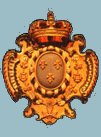French Regime In 1665 and 1666, the Carignan-Salières Regiment was sent over by King Louis XIV to chase away the Iroquois who were stealing the Algonquins’ hunting territories, which hindered the trade of fur between the French and their allies, the Algonquins. With this objective in mind, the Carignan-Salières Regiment built several forts along the Richelieu River. The first Fort Saint-Jean, whose original name was in fact Fort l’Assomption, was one of those and was constructed in 1666 at the South of the Chambly rapids. In July 1667, the Iroquois were already signing a peace treaty with the French and in 1672, as many of the forts constructed and defended by the Carignan-Salières Regiment had lost their usefulness and proved to be expensive to maintain in place, the Governor ordered to abandon many of them, including Fort Saint-Jean, which is believed to have been burnt by the Iroquois afterward. When they were demobilized, the Carignan-Salières soldiers were offered lands in New France and one third of them decided to stay and colonize the French colony. A second French fort was built in Saint-Jean in 1748 because of the tensions that the Spanish Succession War was generating between France and England. The 1748 Fort Saint-Jean was then constructed; its main purpose was to allow the journey from Fort Saint-Frédéric to Montreal to be faster and easier for the troops. For the same reason, they also built a road that linked Saint-Jean to Laprairie and finished its construction the same year. This 200 feet by 200 feet fort was made of four wooden palisades and four bastions, two of which were made of stone. When the French and Indian War broke out in 1756, a shipyard was created and the fort underwent renovations and fortifications under the order of Montcalm, who was in charge of the defence of the colony and who was displeased with the neglected state of Fort Saint-Jean. At first, the French lead a successful offensive south of Champlain Lake in 1757, but quickly the table turns and the English army wins battle after battle. In 1760, one year after the Abraham Plains Battle defeat, Anglo-American reinforcements of between 3,500 and 5,000 men started taking the French colony from the south. Since the Fort Saint-Jean’s troops were not numerous enough to fight back the upcoming British army, they were forced to abandon the fort and before their departure, they burnt it as not to leave it to their enemy. They then went to Montreal, whose capitulation put an end to the French and Indian War in the North-American colonies. Due to archaeological digs that took place at the beginning of the 1980’s, Parks Canada archaeologists found the foundations of the 1748 fort, which allowed us to learn more about that fort and the daily life of its inhabitants.
Réf: http://www.phmc-cmhg.gc.ca/flash/index-eng.asp?t=1
|
 Carte des campagnes menées par le régiment de Carignan-Salières en 1665-1666
|
